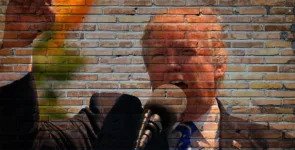There was a fascinating series of events surrounding Donald Trump this week. Apparently, he did an interview that many believed was done by someone else as a prank, but Trump appeared to validate it, suggesting it was either done by him or by someone he approved to stand in for him. This showcases both the problem and the promise of Deep Fake technology. It can be used to supplement us, but it too often is used to confuse or mislead us.
AI has reached the point where it can reliably fill in for others well enough so that the audience can’t tell the difference. When this is done properly, like it is done on the news in South Korea, it lowers staff loading (they use it when their live personality is unavailable or when the news segment is short and a trip to the studio too onerous for the live talent) and benefits the person being emulated.
When this technology is used by, say, a political opponent it can create damaging false impressions that could change elections, damage reputations or even cause someone to get fired who did nothing wrong. And actors are rightly concerned that this technology could be used to replace them without adequately compensating them, or worse, used to damage their reputations and get them blacklisted.
Deep Fake defenses
While the technology industry, particularly Intel, that created this technology is working on detectors to identify and warn about Deep Fakes, the problem is that the folks creating the Deep Fake platforms not only have a significant lead, they also have the initiative. What I mean is that the Deep Fake platforms can be updated to address the ‘tells’ to increasingly make the Deep Fakes more realistic, while companies like Intel must wait until that is done in order to come up with new ways to identify the Deep Fakes.
While what Intel and others are doing to identify Deep Fakes is certainly important, it would be better to recognize when you are likely being scammed or before sharing that questionable post and increasing the damage that the scammer wants done, and if you more aggressively question images that you want to see rather than taking them at face value.
We are all skeptical of things we don’t agree with, but confirmation bias tends to make us accept something we want to be true without challenge, which is what the Deep Fake fraudsters want to happen. By the way, this is also how con-artists work. They tell you what you want to hear, and before you know it, some or all of your money is theirs and they are nowhere to be found. So being skeptical when you are seeing something new, particularly if it is tied to some offer, is a good survival trait, regardless of the circumstances.
In short, your best defense against Deep Fakes is the same best defense against phishing attacks and con artists: always be wary that there are smart people and increasingly smarter technologies that can be used to convince you to do things that aren’t in your best interest.
Typical triggers to recognize if you are being scammed is being asked to provide information that the caller should already have, being asked to provide the answer to identity challenge questions, being led down a path that would result in you spending or sending any money, and, of course, being told something that you desperately want to be true.
Wrapping up: Manipulation is an art, but so is avoiding being manipulated
Whether being manipulated by a human or, increasingly, by an AI, manipulation is an art that consists largely of building a false story that is then used to get you to “voluntarily” do something that is often harmful to you or those you care about. Building a defense against manipulation isn’t easy because we want to believe without question that certain things are true. But if we don’t regularly challenge those beliefs to confirm their truth, eventually someone will use this practice against us, and the result will be problematic.
We naturally question things we don’t believe in and should be open to being convinced that our views are wrong, but more importantly, we also need to question when we agree because that is how we are manipulated with the goal in both cases to be correct, not just thinking we are right.
I fail at this from time to time myself even though I’ve been trained to be skeptical, but working to be better at detecting fraud is our best defense against the AIs that will evolve to more effectively be used against us.








